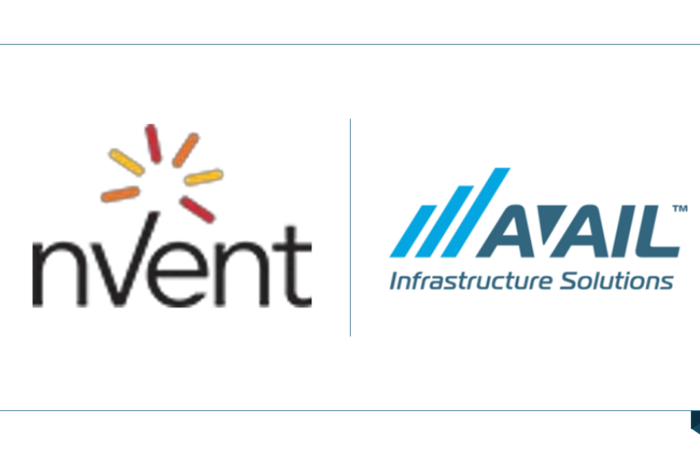Grainger Q2 Sales Slow … Industrial Indicator?

Grainger frequently is a good bellwether for the industrial market given their MRO focus on Fortune 500 industrial accounts. Grainger’s performance highlights that the industrial MRO rate of growth decelerated significantly.
Q2 Report
From their quarterly report and slide presentation:
- Started off saying “the demand environment has softened throughout the year.”
- They sense that the economy is heading into a slower growth cycle and emphasized that, during these times, they focus on helping customers lower costs and that their “endless assortment model” helps them take share as they become a “one-stop shop” distributor. (hints for distributors on how you can position yourself.)
- “Revenue dollars were stable from Q1 to Q2”
- Lowered estimate for annual market growth to -1%
to 2%. Grainger lowered its annual,
company-wide, revenue guidance to 2-5%.
- For US
- US MRO market decelerated from 2-2.5% in Q1 to “approximately 1%” in Q2 and Grainger assumes about 1% in price (many others may say that, given price increases and tariffs, a contraction could be assumed.)
- Core Grainger business grew about 150 basis
points (1.5%) faster than the market.
- Daily sales up 2% … volume up 1.5%, price inflation of .5%
- US large customer growth was 2% for Grainger
- US mid-size customer growth was 5%
- US represents 90% of Grainger sales
- US GP$ up 3% with US GP Margin at 39.8%
- US GP rate increased by 10 basis points
- Expect the slow market growth to continue in the second half of 2019
- US Market Segments
- Retail – up high-single digits
- Government – up mid-single digits
- Commercial – up mid-single digits
- Light manufacturing – up low-single digits
- Contractor – up low-single digits
- Heavy manufacturing – down low-single digits
- Natural resources – down mid-single digits
- For US
Of note, the segments that represent industrial – manufacturing and natural resources (oil, gas, mining) – are down / low growth.
- Canada
- Daily sales down 23% and 20% on a constant currency basis
- Much of Canada issues relate to “turnaround activities”
- Expect 2nd half performance improvement in Canada
- Overall GP is 38.7%
- Reasons for growth
- Slowdown in market
- Implementation of initiatives that are taking
longer to take effect than they thought that they would.
- One new merchandising is integrating voice of the customer in their category review process which, theoretically, should mean that the role of brand name becomes more important with their alternative brand being their private label brand
- Growth initiatives that they expect to help them
to take some share:
- Investing “in foundation” to offer more MRO
solutions.
- Improving product and customer information and building new data platform to make product recommendations to customer (essentially using AI to enhance the business through data analysis.)
- Investing in website to make search easier
- Investments in marketing and merchandising
- Voice of customer in category reviews
- Increases in digital and media spend
- Differentiated sales and service
- Refining customer relationship management processes
- Process is designed to improve sales force effectiveness and help them serve specific markets (niches)
- Expanding service offering to help customers manage total cost and improve productivity.
- Considering some sales force expansion
- Investing “in foundation” to offer more MRO
solutions.
- Stock 600,000+ SKUs in US. New Louisville
distribution center goes online early 2020 and will enable Grainger to add
almost 200,000 more SKUs (SKUs expansion drives sales and provides better
customer service. Grainger may be adding SKUs based upon success of having them
online or could be adding SKUs in general.
This also reinforces some prior comments we’ve made of “the number of
SKUs you offer matter” … either in your warehouse or on your website.)
- Zoro – Plan to add 1,000,000 new items this year and 10,000,000 over next 3-5 years. Many SKUs will be digital / through 3rd parties (a marketplace model for some distributors to consider?)
From analyst questions
- Grainger isn’t forecasting a recession in the US, just a slowdown of growth rate
- Pricing focus, longer-term, is to ensure “priced competitively.” Website provides opportunity to change price rapidly to maintain competitiveness whereas contracts are periodic throughout the year / based upon contractual arrangements.
- About 50% of the midsize customers are in some type of “coverage” model (meaning that they are not being “left on their own to return to the website to buy” … Grainger has some type of outreach effort or contact point for them.)
- Grainger is focusing on being disciplined with its SG&A.
- June was a little stronger than May (perhaps Grainger’s customers suffered the same indecision as many in their buying habits due to tariffs or, since many are manufacturers, they had internal issues relating to tariffs or their own production issues?)
- Every year Grainger expects “every single year to get some continuous improvement”, cost-wise, from its operations. (a good philosophy).
- Heavy manufacturing sales were down low single digits with natural resources down mid-single digits.
Grainger is focused on growth as well as gaining market share on a consistent basis, hence it’s enhanced marketing initiatives and investments.
With the MRO market decelerating to only a 2-2.5% growth rate … essentially flat, expect the market to become more competitive as distributors and manufacturers fight for conversions. As Grainger’s new initiatives show, taking share requires a mix of competitive pricing, differentiated services and getting the message out. In other words, smart investing.
While hopefully we’re not talking ourselves into a recession, recent economic reports indicate a second half slowdown. Some murky waters may lie ahead, from a national economic viewpoint, however, as many distributors say “it’s a local market I compete in” (but this doesn’t help publicly traded manufacturers!)
Grainger’s preparing for a slow market. What are you doing?























